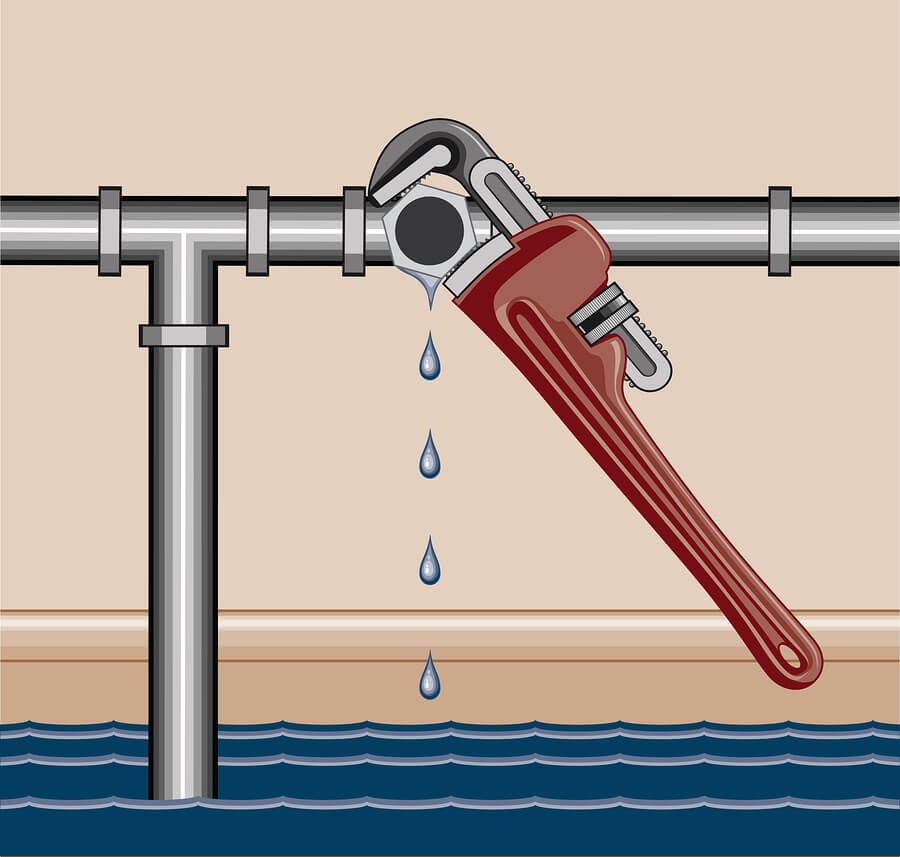Understanding Why Water Leaks Are So Common at Your House
Understanding Why Water Leaks Are So Common at Your House
Blog Article
How do you actually feel in relation to How to Find Water Leaks?

Leaks not only create waste of water but can additionally cause unneeded damages to your home and promote undesirable natural development. Water leaks could go undetected because many of the pipework in our home is hidden. By looking as well as comprehending for daily situations that cause leakages, you can protect your house from future leaks and unneeded damages. Today, we will check out six leak triggers that might be causing your pipelines to trickle.
Instantaneous temperature adjustments.
Extreme temperature level modifications in our pipelines can create them to increase and get suddenly. This development as well as contraction may cause cracks in the pipes, specifically if the temperature are below freezing. It would certainly be best if you kept an eye on just how your plumbing works. The existence of the formerly discussed situations regularly shows a high danger.
Rusty water supply
As time passes by, your plumbing system ages and deterioration such as corrosion may start eating away the pipes. This could be the cause of staining or bending on your pipes. This asks for an assessment with your plumber immediately. Consider replacing the pipelines given that they are at a higher danger of rust than the more recent models if our plumbing system is old.
Faulty Pipe Joints
The factor at which your pipelines attach is frequently the weakest web link in the waterline. Pipeline joints can weaken with time, leading to water leakages. The majority of pipe joints are not quickly noticeable. If you have loud pipelines that make ticking or banging sounds, especially when the hot water is activated, your pipe joints are most likely under a great deal of pressure. It is suggested to have your plumber examine your system once a year.
Intruding origins
Most water leaks begin outside your house instead of inside it. If you observe an unexpected decrease in water pressure, say in your faucet, require time to head out as well as examine your yard. You could see damp spots or sinkholes in your lawn, and that might suggest that tree origins are getting into water lines triggering water to seep out. You can have your plumber look for breach, specifically if you have trees or hedges near your building.
Poor Water Connectors
At times, a leakage can be triggered by loosened hose pipes and pipelines that provide your appliances. In case of a water links leak, you may notice water running straight from the supply line or puddles around your devices.
Clogged Drains
Obstructed drains could be irritating as well as inconveniencing, however they can often end up creating an overflow leading to rupture pipelines. Maintain removing any kind of products that may drop your drains pipes that can obstruct them to stay clear of such inconveniences.
All the above are reasons for leaks but not all water leakages arise from plumbing leaks; some leakages may originate from roof leaks. All leaks ought to be fixed promptly to prevent water damages.
Leakages not just cause waste of water but can also cause unneeded damage to your home and advertise undesirable natural development. By comprehending and looking for daily situations that trigger leaks, you can protect your residence from future leaks and unneeded damage. Today, we will look at six leak causes that may be causing your pipes to drip.
At times, a leak can be triggered by loose tubes as well as pipelines that provide your appliances. In case of a water connections leak, you might observe water running directly from the supply line or pools around your appliances.
How To Check For Water Leak In Your Home
How To Check for Leaks
The average household's leaks can account for nearly 10,000 gallons of water wasted every year and ten percent of homes have leaks that waste 90 gallons or more per day. Common types of leaks found in the home are worn toilet flappers, dripping faucets, and other leaking valves. These types of leaks are often easy to fix, requiring only a few tools and hardware that can pay for themselves in water savings. Fixing easily corrected household water leaks can save homeowners about 10 percent on their water bills.
To check for leaks in your home, you first need to determine whether you're wasting water and then identify the source of the leak. Here are some tips for finding leaks:
Take a look at your water usage during a colder month, such as January or February. If a family of four exceeds 12,000 gallons per month, there are serious leaks.
Check your water meter before and after a two-hour period when no water is being used. If the meter changes at all, you probably have a leak.
Identify toilet leaks by placing a drop of food coloring in the toilet tank. If any color shows up in the bowl after 10 minutes, you have a leak. (Be sure to flush immediately after the experiment to avoid staining the tank.)
Examine faucet gaskets and pipe fittings for any water on the outside of the pipe to check for surface leaks.
Undetected water leaks can happen without the home or business owner even realizing. If you suspect a water leak, but not able to find the source. It is time to contact a professional water leak detection service, The Leak Doctor.
How To Find a Water Leak In Your Home
https://www.leakdoctor.com/blog/How-To-Check-For-Water-Leak-In-Your-Home_AE197.html

We had been made aware of that write-up on Common Water Leaks In House from someone on a different domain. Sharing is nice. You just don't know, you may be doing someone a favor. We cherish reading our article about How to detect water leaks in your home.
Contact Us Now Report this page